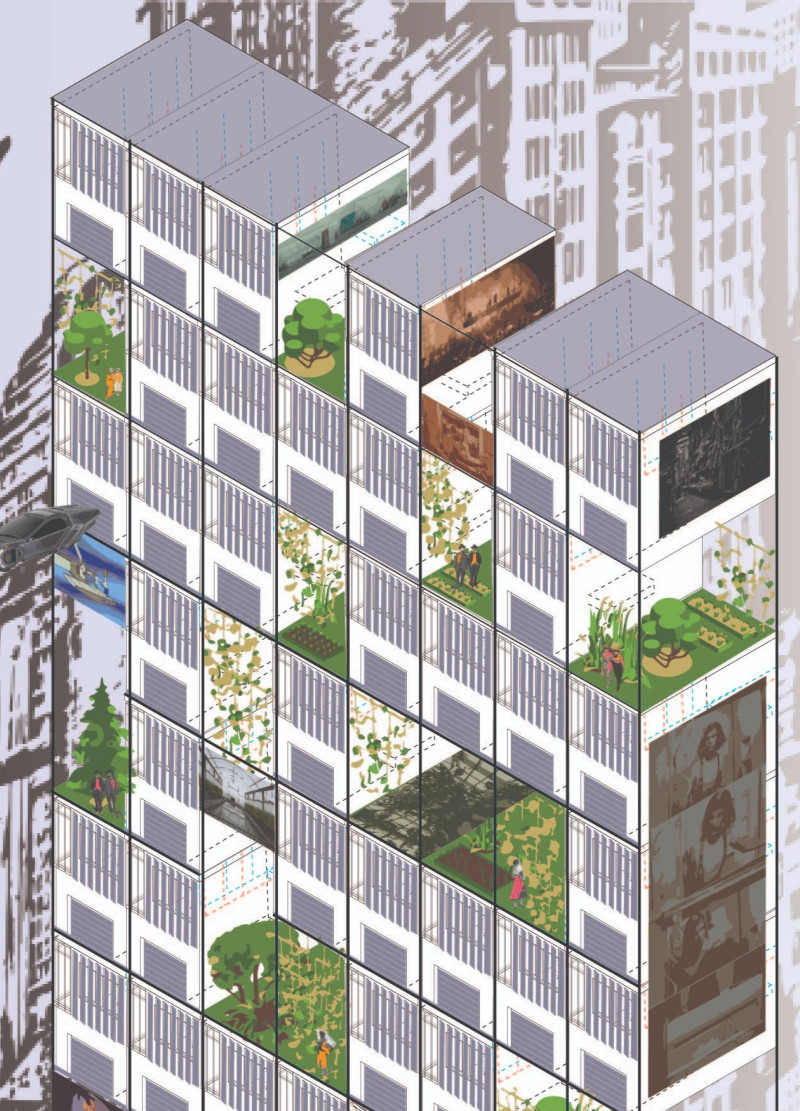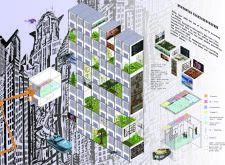5 key facts about this project
The VINO Dystopian Vegetated Matrix is set in New York City, envisioned for completion in 2060. It focuses on the redevelopment of abandoned office buildings. These once corporate spaces will be transformed into compact living units surrounded by greenery. The design aims to respond to the changes in society brought about by a super virus, emphasizing sustainable urban living and a connection to the natural environment.
Spatial Organization and Functionality
Space is organized to facilitate essential living requirements, featuring elements such as elevators, kitchenettes, and decontamination zones. These components are particularly important in a world still grappling with health concerns. They enhance convenience for residents while maximizing efficiency within a compact layout. A focus on adaptability ensures that the design meets the challenges of urban life.
Integration with Green Spaces
At the heart of the design lies the integration of green spaces within the urban framework. Abandoned areas are reimagined as active spaces for plants and gardening. This inclusion not only enhances the visual appeal but also strengthens ecological networks. Residents will find areas for social interaction and relaxation among the greenery. This blend of living spaces with nature offers a refreshing contrast to traditional city environments.
Sustainable Systems and Technology
Sustainability is a key feature of the VINO Dystopian Vegetated Matrix. Water collection and filtration systems are incorporated into the design to support both the inhabitants and the surrounding greenery. Additionally, the use of waste water as fertilizer exemplifies a practical approach to resource management. These systems work together to foster a living environment that addresses both ecological concerns and the needs of its residents.
Visual and Cultural Influences
Inspiration for the design comes from a range of science fiction films, such as Metropolis and Blade Runner: 2049. These references highlight themes of technology intertwined with nature, envisioning a future where urban life and the environment coexist harmoniously. The design reflects this vision, aiming to create a space where people can thrive alongside greenery.
The rooftop gardens provide a diverse ecosystem for both plants and residents, offering spaces for relaxation and gardening. This feature reinforces the bond between urban life and nature.


















































